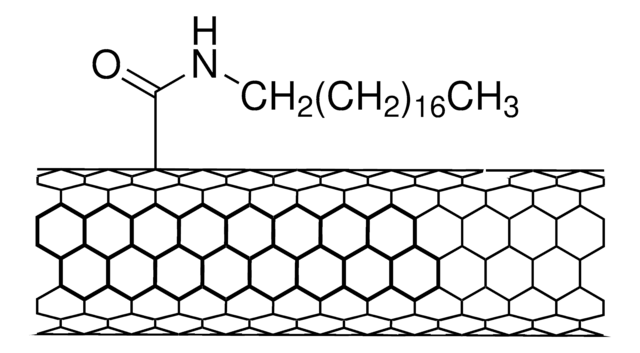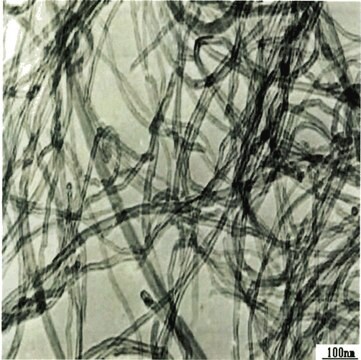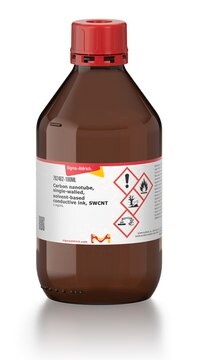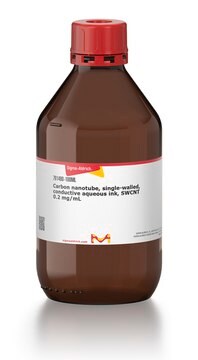652490
Carbon nanotube, single-walled
carboxylic acid functionalized, >90% carbon basis,D × L 4-5 nm × 0.5-1.5 μm , bundle dimensions
Sinonimo/i:
SWNT, carboxylic acid functionalized
About This Item
Prodotti consigliati
product name
Carbon nanotube, single-walled, carboxylic acid functionalized, >90% carbon basis, D × L 4-5 nm × 0.5-1.5 μm , bundle dimensions, avg. no. of layers, 1
Livello qualitativo
Saggio
>90% carbon basis
Forma fisica
powder
Caratteristiche
avg. no. of layers 1
Grado di funzionalizzazione
1.0-3.0 atom% carboxylic acid
D × lung.
4-5 nm × 0.5-1.5 μm , bundle dimensions
Impurezze
5-8% metals
Solubilità
H2O: dispersible 0.1 mg/mL
DMF: dispersible 1.0 mg/mL
Gruppo funzionale
carboxylic acid
Categorie correlate
Descrizione generale
Applicazioni
Confezionamento
Proprietà fisiche
Nota sulla preparazione
Risultati analitici
Avvertenze
Warning
Indicazioni di pericolo
Consigli di prudenza
Classi di pericolo
Eye Irrit. 2 - STOT SE 3
Organi bersaglio
Respiratory system
Codice della classe di stoccaggio
11 - Combustible Solids
Classe di pericolosità dell'acqua (WGK)
WGK 3
Punto d’infiammabilità (°F)
Not applicable
Punto d’infiammabilità (°C)
Not applicable
Dispositivi di protezione individuale
dust mask type N95 (US), Eyeshields, Gloves
Scegli una delle versioni più recenti:
Possiedi già questo prodotto?
I documenti relativi ai prodotti acquistati recentemente sono disponibili nell’Archivio dei documenti.
I clienti hanno visto anche
Articoli
Carbon nanotubes are materials that possess remarkable properties and offer extraordinary possibilities.
Dr. Xiang’s and Maruyama’s review presents the most recent research activities on 1D vdWHs, including the candidate materials, the synthetic techniques, and characterization methods. The optoelectronic applications are discussed in detail for different constructions of the 1D vdWHs-based devices (FETs, sensors, LEDs, photovoltaic devices, and light detection). Some challenges and perspectives for future development and applications of 1D vdWHs are also proposed to conclude the review.
Carbon nanotubes (CNTs) have received much attention since their discovery in 1991 by Sumio lijima1 due to their excellent mechanical, electrical, and optical properties.
A nanocomposite is typically defined as a mixture between a host material (e.g., polymer matrix) and nanofillers with at least one dimension of less than 100 nm.
Il team dei nostri ricercatori vanta grande esperienza in tutte le aree della ricerca quali Life Science, scienza dei materiali, sintesi chimica, cromatografia, discipline analitiche, ecc..
Contatta l'Assistenza Tecnica.









